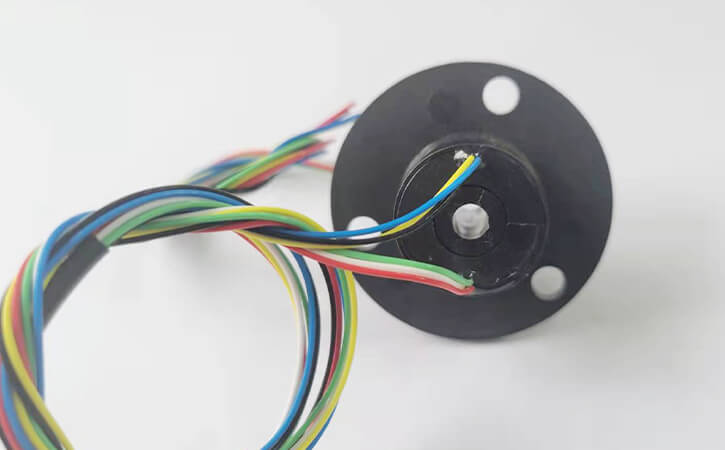The application of CT scanning imaging technology has made great contributions to medicine. The principle of CT scanning is to transmit power and data between a rotating X-ray tube and a stationary detector. This is where slip-ring technology comes into play.
Quick Introduction
The mystery of what the inside of the human body is like has also been answered with the realization of the imaging technology of the internal structure of the human body. How realize the imaging of the internal structure of the human body requires the use of CT scanning diagnostic imaging technology. The application of CT scanning imaging technology is inseparable from the contribution of slip rings, but do you know how slip rings work?
Answering the Questions
What Are Slip Rings?
Rotary electrical joints and commutators are all slip rings, but they are called differently. The main function of a slip ring is to transmit power or data between a rotating part and a stationary part. Slip rings are commonly used in applications such as wind turbines, robotics, and CT scanning. In this paper, we mainly discuss the implementation of slip ring technology in CT scanning.
How Do Slip Rings Work in CT Scanning?
To know how to slip ring technology is applied in CT scans, we must first know the function of slip rings and the working principle of CT scans. We have addressed both of these issues above. Generally speaking, slip ring technology is embodied in the transmission of power and data between the rotating X-ray tube and the stationary detector. The existence of the slip ring enables the power received by the X-ray tube while rotating and the continuously collected data to be successfully sent to the detector, thereby producing high-quality images of the internal structure of the human body.
What Are the Advantages of Using Slip Rings in CT Scanning?
The use of slip rings in CT scanning offers several advantages. First, it allows for continuous data acquisition, which reduces motion artifacts and improves image quality. Second, it eliminates the need for cables and wires that can interfere with the scan and cause image artifacts. Finally, it allows for faster scanning times, which can be beneficial for patients who are unable to remain still for long periods.
Are There Any Limitations to Using Slip Rings in CT Scanning?
While the use of slip rings in CT scanning offers several advantages, there are some limitations to consider. Slip rings are mechanical components that can wear out over time, leading to decreased performance or failure. Additionally, slip rings can generate heat during operation, which can be a concern for sensitive electronic components in the scanner.
Conclusion
In conclusion, the slip ring technique in CT scanning is an important component that allows for continuous data acquisition, reduces motion artifacts, and improves image quality. The use of slip rings eliminates the need for cables and wires that can cause image artifacts and allows for faster scanning times. While slip rings do have some limitations, they remain an essential component of modern CT scanning technology.
If you have any questions or comments about the slip ring technique in CT scanning, feel free to leave them below.
Frequently Asked Questions
Q: How Long Do Slip Rings Last in CT Scanners?
A: The lifespan of slip rings in CT scanners can vary depending on factors such as usage, maintenance, and environmental conditions. However, it is not uncommon for slip rings to last several years before requiring replacement.
Q: Can Slip Rings Be Repaired or Replaced?
A: Yes, slip rings can be repaired or replaced as needed. However, it is important to use high-quality components and follow proper installation and maintenance procedures to ensure optimal performance and longevity.
Q: Are Slip Rings Used in Other Medical Imaging Technologies?
A: Yes, slip rings are commonly used in other medical imaging technologies such as magnetic resonance imaging (MRI) and positron emission tomography (PET) scanning.
See What We Can Do

